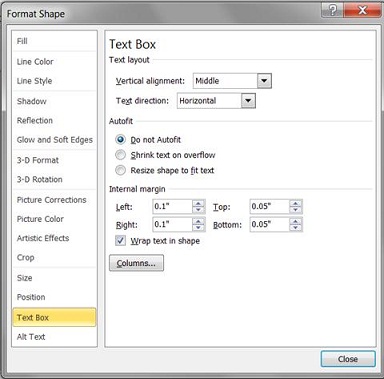

No distinction is made between the various styles of Arabic, such as Nastaliq, Magribi, Kano, etc, or those that are abjads and those that are alphabetic. Arabic accounts for a large proportion, with 189 languages and just over 2 billion potential users. The table lists 12 scripts, and 215 languages. Nonetheless, at 2,305,048,719 it indicates that the actual number of potential users possibly runs past a billion.

The total number of potential users is of course an overestimate, because it doesn't take into account literacy levels or competing scripts or usage trends. Word displays the Text Direction dialog box. Choose the Text Direction option from the Format menu. Some of the smaller languages are not mentioned, and the figures don't take into account users of liturgical languages. To change text orientation, follow these steps: Select the AutoShape, text box, or table cell that contains the text whose orientation you want to change. The Potential Users column lists the number of overall speakers of that language (native and second language users). The Script Usage column shows all scripts that can be used for that language: the relative order gives a rough idea of frequency of use, and where the script usage is minor it appears in parentheses. This data is gathered from information in the SIL Ethnologue. The following table gives a rough idea of modern spoken languages that can be written using RTL scripts, and where they are spoken. When written in the Arabic script, it is written right-to-left. When written in Latin or Cyrillic scripts, Azeri is written left-to-right (LTR). For example, Azeri can be written in any of the Latin, Cyrillic, or Arabic scripts.

Languages can be written in more than one script. Scripts have a writing direction, and so languages written in a particular script, will be written with the direction of that script. Which languages are written right-to-left (RTL)? Visual Basic Scripting Edition (VBScript). This sense of the word "script" has nothing to do with programming scripts such as Perl or Syllabaries and the kanji ideographs imported from China). Some written languages require multiple scripts (for example, Japanese, which requires at least three scripts: the hiragana and katakana One script can be used for several different languages (for example, Latin script, which covers all of WesternĮurope). Microsoft offers the following definition on their globalization web site: Script: A collection of characters for displaying written text, all of which have a common characteristic that justifies The Unicode Consortium's glossary uses the following definition: Script: a collection of symbols used to represent text in one or more writing systems. Involved to create web pages in a new language. Therefore, knowing the writing direction can be relevant to estimating the work Knowing the directionality of text, based on the script(s) to be used, is important to web designers and authors, because right-to-left text can be more complicated (for beginners) to work with and the organization and directionality of the page layout are affected. Click the Insert tab at the top of the window.What languages are written with right-to-left scripts?.Open your document in Microsoft Word 2013.Your text can be either horizontal (default), it can be rotated by 90 degrees, or it can be rotated by 270 degrees.

How to change text direction in word from left to right how to#
The steps below will show you how to create a text box, add text to it, then change the direction of that text. Changing the Direction of Text in a Text Box in Word 2013 If you need to move your content to the center of the page, then our guide on how to center text in Word can help you out.


 0 kommentar(er)
0 kommentar(er)
